ake repair with substandard procedures and materials is a recipe for future comebacks. To help update our inspection procedures, let’s begin by discussing the service write-up.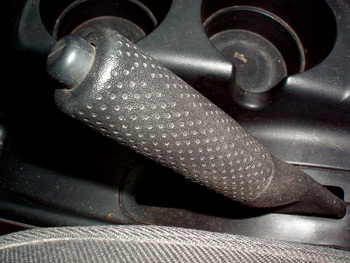
SERVICE WRITE-UPS
A good service writer begins a brake inspection by interviewing the driver. For example, a lack of cold-brake response first thing in the morning might trouble a customer more than an illuminated anti-lock braking (ABS) warning light. Or, a shrill squeal on a damp day, or a brake pull or a soft brake pedal might be the customer’s most important concern. Many of these customer concerns are addressed by TSBs issued by auto and brake friction manufacturers. If that concern isn’t addressed, then the shop isn’t going to meet the customer’s expectations.
Especially in these tough times, a good service writer will also seek to prioritize a customer’s needs in relation to his income. For example, does he really need both brake axle sets replaced on this service visit? Or does he really need those loaded calipers or new rotors at this very point in time? These are but a few of the issues in brake service that need the talents of a good service writer.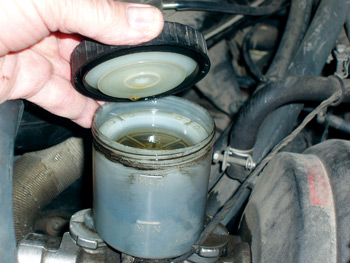
Last, but not least, a service writer must be able to keep his or her shop profitable. All too often, shop owners and techs become so involved in the technical aspects of repairing the vehicle that they forget they need to operate at a profit. To achieve an acceptable profit margin, a good service writer must optimize the use of his facility and his available technical talent. How this is done depends largely on the shop’s facilities and the needs of the shop’s clientele. But, in the end, success in selling brake services depends largely on using a step-by-step procedure for diagnosing brake performance problems and providing a reliable, trouble-free brake repair.
THE INITIAL INSPECTION
The brake inspection should begin with starting the engine and, perhaps, taking the vehicle on a short test-drive before driving it into the service bay. To illustrate, do the red “brake” and the orange “ABS” warning lights illuminate when the ignition is turned on? In some cases, a low brake fluid reservoir level might illuminate both lights. In other cases, a sticking park brake handle or a hydraulic failure in the master cylinder might illuminate the red warning light. If the ABS warning light is illuminated, I’d recommend that a technician use a scan tool to quickly retrieve the “C-series” trouble codes generally associated with ABS electronic failures.
THE TEST-DRIVE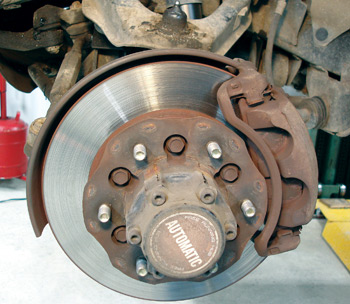
Among the first steps in any brake inspection should be an evaluation of brake pedal feel and pedal height. If the pedal feels spongy, microscopic amounts of air might have invaded the system. If the pedal feels low, perhaps the self-adjusters on the drum brakes have seized or, if the vehicle requires a park brake application to compensate for brake pad wear, the park brake itself might have seized cables. If the park brake can’t be applied with normal pressure, the cables are likely seized. Whatever you do, don’t force a sticky park brake pedal or lever because it might not fully release!
A short test-drive will generally reveal noises and performance problems associated with metal-to-metal brake friction wear, and loose drivetrain, suspension and steering components. Pedal pulsation complaints might occasionally show up when the brakes are lightly applied. In some cases, the vehicle might have a defective tire causing a pedal pulsation or brake pulling complaint.
UNDER THE HOOD
The condition of the fluid in the master cylinder reservoir is usually a good indicator of the brake system’s overall condition. During normal driving, the master cylinder reservoir fluid compensates for brake pad wear. When the fluid level becomes critical, the red brake warning and, perhaps, the orange ABS light should illuminate. If they don’t, the master cylinder’s fluid level warning sensor might be defective.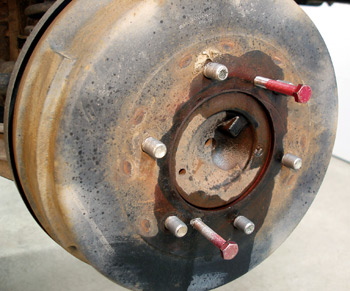
Because fluid contamination can ruin any brake repair, it’s important to thoroughly inspect the condition of the fluid in the master cylinder reservoir. A swollen rubber cap or cover seal indicates that oil or solvent has been mistakenly introduced into the system. Dark, sludgy fluid is indicative of major wear in the brake system seals and hoses. Rusty fluid indicates the introduction of water into the system. Last, always inspect the interface between the master cylinder and brake booster for leakage from the cylinder bore. As a routine safety measure, always discharge the ABS accumulator by pumping the brake pedal before servicing brake hydraulics.
UNDERCAR INSPECTIONS
Before removing the wheels, grasp the wheel at the 3 and 9 o’clock positions and turn the wheels in and out to check for steering linkage wear and binding. Then, grasp the wheel at the 12 o’clock and 6 o’clock positions to check for loose wheel bearings. Loose wheel bearings can cause ABS trouble codes and faulty ABS operation.
When removing the wheels, always check for cuts, bulges, tread or sidewall cracking, and other tire casing defects. If you make it a habit to inspect the front suspension, steering system and wheel bearing problems after the wheels are removed, you’ll also discover even more profitable repairs. 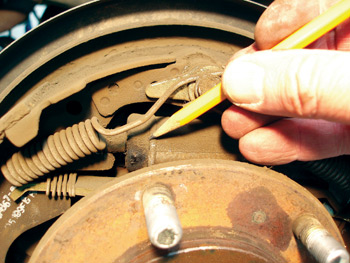
Always keep the mileage of the vehicle in mind when servicing brakes. In rust-belt areas, corrosion takes its toll on calipers and rotors. In some cases, it’s cheaper and more reliable to replace whole assemblies than it is to attempt a partial repair. In dry climates, calipers tend to last a very long time. But, if one caliper is leaking or the piston is seized and won’t easily compress into the bore, both calipers should be replaced. In addition, brake line replacement is often a must when servicing brakes in rust-belt areas. In this case, installing a completely new brake system might be cheaper than trying to patch the old.
When compressing a caliper piston, many technicians loosen the bleed screw to allow old, dirty fluid to vent into a container. This procedure prevents the old fluid from being forced through the ABS module to the fluid reservoir. If the brake hose is cracked or hardened, it should be replaced. After cleaning the caliper guides and other hardware, lubricate them with a modern synthetic caliper lubricant. To prevent expensive comebacks, make it a practice to install the new caliper hardware that comes with the new brake pads.
Rotor thickness should also be measured during an inspection. In general, resurfacing requires at least 0.020” of stock per side over the discard specification. Heat checking and bluing of the metal generally indicate that the rotor can’t be successfully resurfaced. If the rotor is in marginal condition, it’s generally more cost-effective to replace than to resurface.
Last, remember that many vehicles require application-specific brake pads. If you do the math on the actual cost savings between an OE or OE-equivalent pad and a substandard substitute, you’ll likely realize only a small percentage of actual savings on the entire brake service package. Balance that savings with the potential complaints and comebacks, and you’ll find that installing substandard friction material is generally a money-losing practice.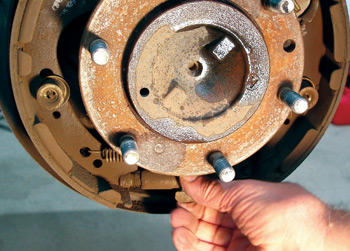
Drum brakes require specific inspection procedures because their wheel cylinders corrode internally and their self-adjustment hardware often wears or corrodes. Although a wheel cylinder might show no apparent leakage during the initial inspection, the new brake shoes often reposition the piston cups in the cylinder bores, which can then cause a cylinder leak. New wheel cylinders have become so inexpensive that they should be included with any brake shoe replacement.
Always check drums for out-of-round as well as excessive diametrical wear. Despite a normal appearance, brake drums can become out-of-round if they have been driven and left to cool with the park brake applied. Uneven drum-to-friction clearance will cause increased pedal travel and increased friction wear. Always finish any brake repair by torquing the lug bolts to specification, testing the tires for correct air pressure and test-driving the vehicle to seat the pads before delivery.
MANAGEMENT INSIGHTS
Although the above steps form the basic foundation of a professional brake inspection, other additions and refinements are always required. Keep in mind that the hydraulic brake repairs on hybrid or electric vehicles require specific procedures that are too lengthy to cover in this space. Without specific training and tooling, a technician can be seriously injured.
As always, our techniques must change with the technology and change is the only real constant in modern brake service.













